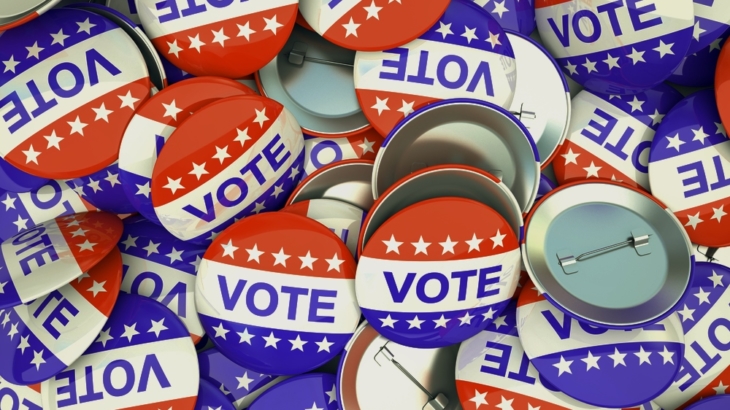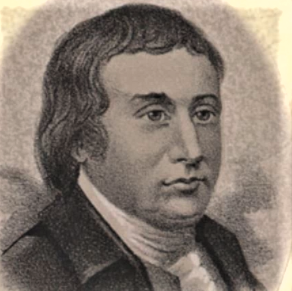
Essay Read by Constituting America Founder, Actress Janine Turner
“[The President] will, under this Constitution, be placed in office as the President of the whole Union, and will be chosen in such a manner that he may be justly styled the man of the people.” – James Wilson, Speech at the Pennsylvania Ratifying Convention (December 4, 1787).
“It was also peculiarly desirable, to afford as little opportunity as possible to tumult and disorder. This evil was not least to be dreaded in the election of a magistrate, who was to have so important an agency in the administration of the government, as the president of the United States.” – Alexander Hamilton, Federalist No. 68
America’s founding generation gets a bad rap these days, and the presidential election system they created, if anything, receives even less respect.
News outlets blast the Electoral College as “terrible, skewed, [and] anachronistic.” The system was allegedly created because of slavery, one prominent critic writes, and it was intended to “help one group—white Southern males.” Others claim the system is anti-democratic, created by aristocratic white men who wanted to dilute the voices of the masses because they believed “ordinary citizens . . . too poorly informed to choose wisely.”
To listen to these critics, free and fair presidential elections will not exist until the Electoral College is eliminated, replaced by a national popular vote.
Except none of it is true. The reality is that the delegates to the Constitutional Convention strove to design a system that would accurately reflect the will of the people, knowing that the new United States government would be a miserable failure if the people’s voice was not expressed at election-time.
George Mason, delegate from Virginia, emphasized that “the genius of the people must be consulted.” Pennsylvania delegate James Wilson agreed that “[n]o government could long subsist without the confidence of the people.” Governmental authority, he concluded, must “flow immediately from the legitimate source of all authority. . . the mind or sense of the people at large. The Legislature ought to be the most exact transcript of the whole Society.”
This sentiment was just as strong when it came to election of the President.
“It was desireable, that the sense of the people should operate in the choice of the person to whom so important a trust was to be confided,” Alexander Hamilton concluded.
Yet what does it mean to reflect the “sense of the people” in a nation composed of both large and small states, as well as many religions, industries, and subcultures? How can both rural and urban areas be represented? The questions are difficult. After all, the President is the only elected official expected to represent every single American, from every walk of life, simultaneously.
A simple national popular vote for President would be too easily manipulated, the delegates to the Convention concluded, ensuring that large states and heavily populated areas are over-represented while small states are ignored.
“An Election by the people [is] liable to the most obvious & striking objections,” Charles Pinckney of South Carolina observed. “They will be led by a few active & designing men. The most populous States by combining in favor of the same individual will be able to carry their points.” Roger Sherman, delegate from Connecticut, echoed this concern: “[The people] will generally vote for some man in their own State, and the largest State will have the best chance for the appointment.”
The Founders knew that a unique presidential election process would be needed to reflect the “sense of the people” in such a large, diverse country. Thus, they created our Electoral College: Its state-by-state election process requires presidential candidates to obtain more than just a simple majority, too heavily focused on one part of the country. Instead, candidates must obtain cross-regional support and federal majorities to win.
“[The President] is now to be elected by the people,” James Madison concluded. James Wilson, delegate from Pennsylvania, agreed that the President “will, under this Constitution, be placed in office as the President of the whole Union, and will be chosen in such a manner that he may be justly styled the man of the people.”
It’s an important point: The Electoral College seeks the fairest solution for the whole Union, not merely one part of it.
The Electoral College supports the principle of fair and free elections in a second way that often goes unnoticed. The system minimizes fraud and provides “as little opportunity as possible to tumult and disorder,” as Alexander Hamilton wrote.
Because of its state-by-state structure, the Electoral College typically produces quick and undisputed outcomes. When problems do occur, they are isolated to one or a handful of states, where they can be more easily resolved. Fraud is minimized because it is hard to predict where stolen votes will matter.
The election of 2020 proved—again—the ability of the Electoral College to provide stability when chaos threatens to reign. Because of the system, problems were isolated to a few states such as Michigan, Pennsylvania, and Wisconsin. Moreover, problematic areas such as Detroit and Philadelphia were highlighted.
Such transparency would not have occurred without the Electoral College. In a national popular vote system, local difficulties could have been glossed over, lost in the glare of the large 7-million national popular vote margin. As things stand today, however, state legislators have an opportunity to investigate and fix local problems, as needed.
An American historian once described the Founders’ conclusions about their presidential election system: “[F]or of all things done in the convention,” Max Farrand wrote, in his book, The Framing of the Constitution of the United States (2022), “the members seemed to have been prouder of that than of any other, and they seemed to regard it as having solved the problem for any country of how to choose a chief magistrate.”
Indeed, the Electoral College has done more to protect fair and free elections in America than the Founders could possibly have imagined.
 Tara Ross is a retired lawyer and the author of several books about the Electoral College, including Why We Need the Electoral College (Regnery Gateway).
Tara Ross is a retired lawyer and the author of several books about the Electoral College, including Why We Need the Electoral College (Regnery Gateway).



 Tara Ross is nationally recognized for her expertise on the Electoral College. She is the author of Why We Need the Electoral College (2019), The Indispensable Electoral College: How the Founders’ Plan Saves Our Country from Mob Rule (2017), We Elect A President: The Story of our Electoral College (2016), and Enlightened Democracy: The Case for the Electoral College (2d ed. 2012). She is also the author of She Fought Too: Stories of Revolutionary War Heroines (2019), and a co-author of Under God: George Washington and the Question of Church and State (2008) (with Joseph C. Smith, Jr.). Her Prager University video, Do You Understand the Electoral College?, is Prager’s most-viewed video ever, with more than 60 million views.
Tara Ross is nationally recognized for her expertise on the Electoral College. She is the author of Why We Need the Electoral College (2019), The Indispensable Electoral College: How the Founders’ Plan Saves Our Country from Mob Rule (2017), We Elect A President: The Story of our Electoral College (2016), and Enlightened Democracy: The Case for the Electoral College (2d ed. 2012). She is also the author of She Fought Too: Stories of Revolutionary War Heroines (2019), and a co-author of Under God: George Washington and the Question of Church and State (2008) (with Joseph C. Smith, Jr.). Her Prager University video, Do You Understand the Electoral College?, is Prager’s most-viewed video ever, with more than 60 million views.  Podcast by Maureen Quinn.
Podcast by Maureen Quinn.